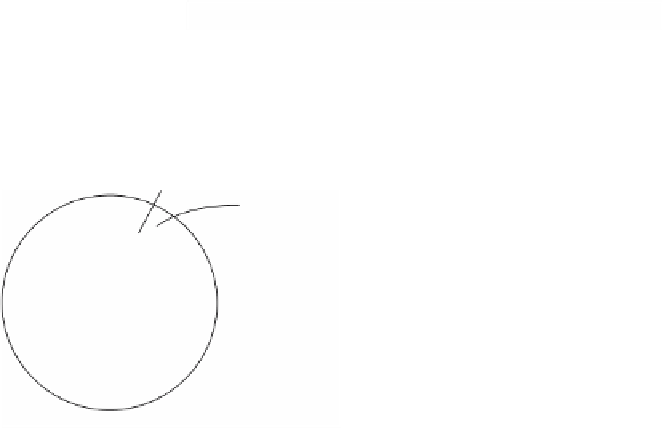Graphics Reference
In-Depth Information
8.5.4. Corollary.
If
M
n
is a closed compact connected n-dimensional manifold, then
it is orientable with the definition given in this section if and only if it is orientable
with the definition of orientability of pseudomanifolds given in Section 7.5.
Proof.
This corollary is an immediate consequence of Theorems 7.5.3, 8.3.3, and
8.5.3.
Using Theorem 8.5.3 it is now relatively easy to determine whether a connected
differentiable manifold is orientable because we can compute the homology groups
from the pseudomanifold structure.
We finish this section with a result about the existence of nonzero vector fields.
Manifolds certainly admit nonzero (tangential) vector fields locally, that is, over
sufficiently small neighborhoods of any given point. One gets this from the local
parameterizations. On the other hand, it is an interesting question as to whether a
manifold admits a global nonzero vector field. A famous result (Corollary 8.5.6 below)
states that
S
2
does
not
have any nonzero vector field. This is the so called “hairy bil-
liard ball” problem, which says that no matter how one combs a hairy billiard ball
there will always be a discontinuity somewhere (a “cowlick”). See Figure 8.19. Of
course, the “hairy circle”
can
be combed as Figure 8.17(a) shows. One can generalize
the question about nonzero vector fields to asking how many linearly independent
vector fields (the vectors are linearly independent at each point) a k-dimensional man-
ifold admits. A beautiful deep result in topology answers this question completely. See
[AgoM76]. What is beautiful about this is that it is a perfect example of where an
answer to a question needs a good understanding of many fields in mathematics. It
points out the virtue of having a broad knowledge and not just expertise in one
specialty!
S
n
admits a nonzero vector field if and only if n is odd.
8.5.5. Theorem.
Proof.
If n is odd, say n = 2k + 1, then
(
)
=-
(
)
s xx
,
,...,
x
xx
,
,...,
-
x
,
x
1 2
22
k
+
2 1
22 21
k
+
k
+
is a nonzero vector field. Next, suppose that n is even, say n = 2k, and that s is a
nonzero vector field on
S
n
. We may clearly assume that s(
p
) is a unit vector for all
p
,
so that we may consider s as a map from
S
n
to
S
n
. Define
“cowlick”
Figure 8.19.
A “hairy” billiard ball cannot be
combed.


